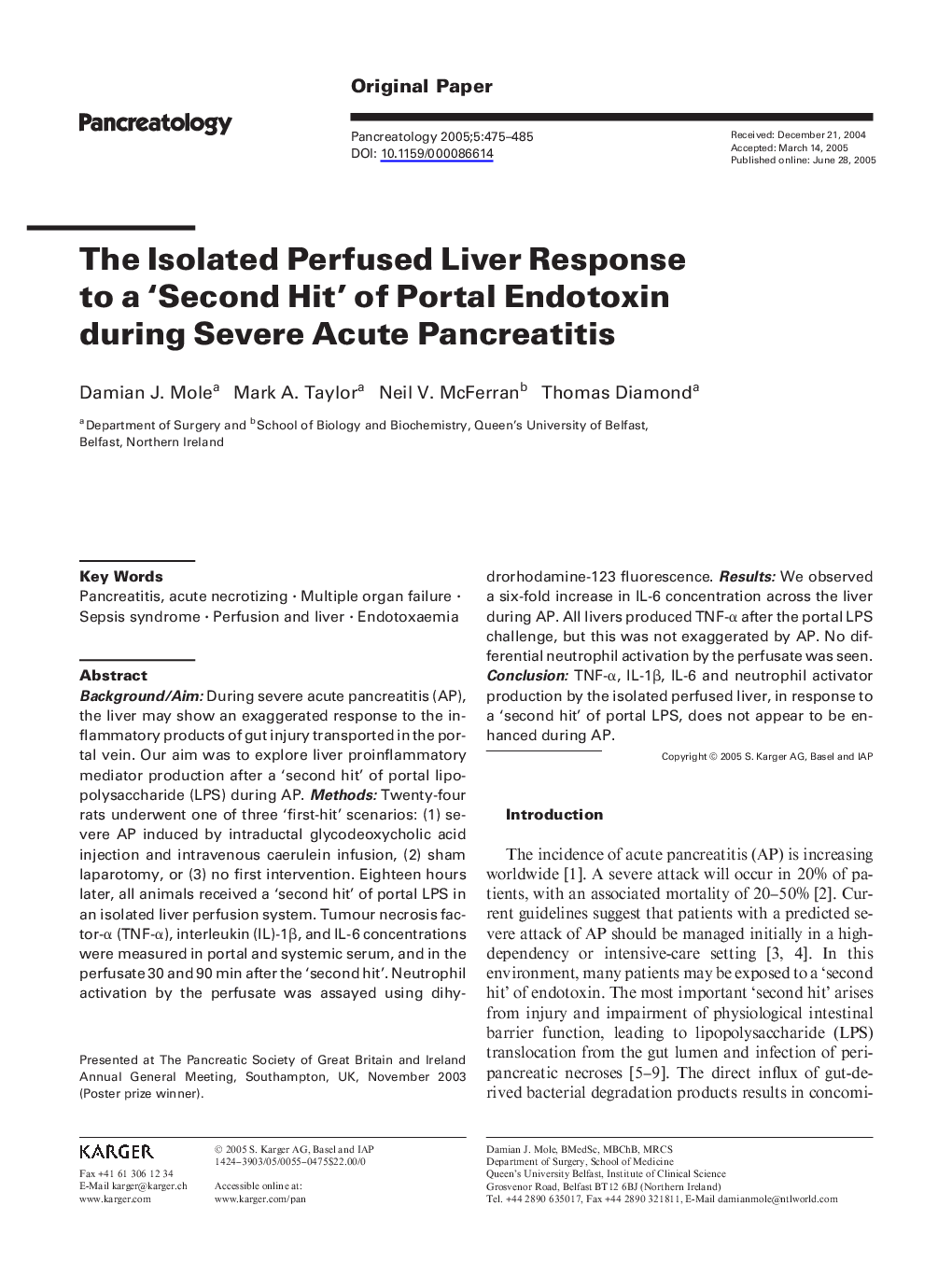| Article ID | Journal | Published Year | Pages | File Type |
|---|---|---|---|---|
| 9256144 | Pancreatology | 2005 | 11 Pages |
Abstract
Background/Aim: During severe acute pancreatitis (AP), the liver may show an exaggerated response to the inflammatory products of gut injury transported in the portal vein. Our aim was to explore liver proinflammatory mediator production after a âsecond hit' of portal lipopolysaccharide (LPS) during AP. Methods: Twenty-four rats underwent one of three âfirst-hit' scenarios: (1) severe AP induced by intraductal glycodeoxycholic acid injection and intravenous caerulein infusion, (2) sham laparotomy, or (3) no first intervention. Eighteen hours later, all animals received a âsecond hit' of portal LPS in an isolated liver perfusion system. Tumour necrosis factor-α (TNF-α), interleukin (IL)-1β, and IL-6 concentrations were measured in portal and systemic serum, and in the perfusate 30 and 90 min after the âsecond hit'. Neutrophil activation by the perfusate was assayed using dihydrorhodamine-123 fluorescence. Results: We observed a six-fold increase in IL-6 concentration across the liver during AP. All livers produced TNF-a after the portal LPS challenge, but this was not exaggerated by AP. No differential neutrophil activation by the perfusate was seen. Conclusion: TNF-α, IL-1β, IL-6 and neutrophil activator production by the isolated perfused liver, in response to a âsecond hit' of portal LPS, does not appear to be enhanced during AP.
Related Topics
Health Sciences
Medicine and Dentistry
Gastroenterology
Authors
Damian J. Mole, Mark A. Taylor, Neil V. McFerran, Thomas Diamond,
